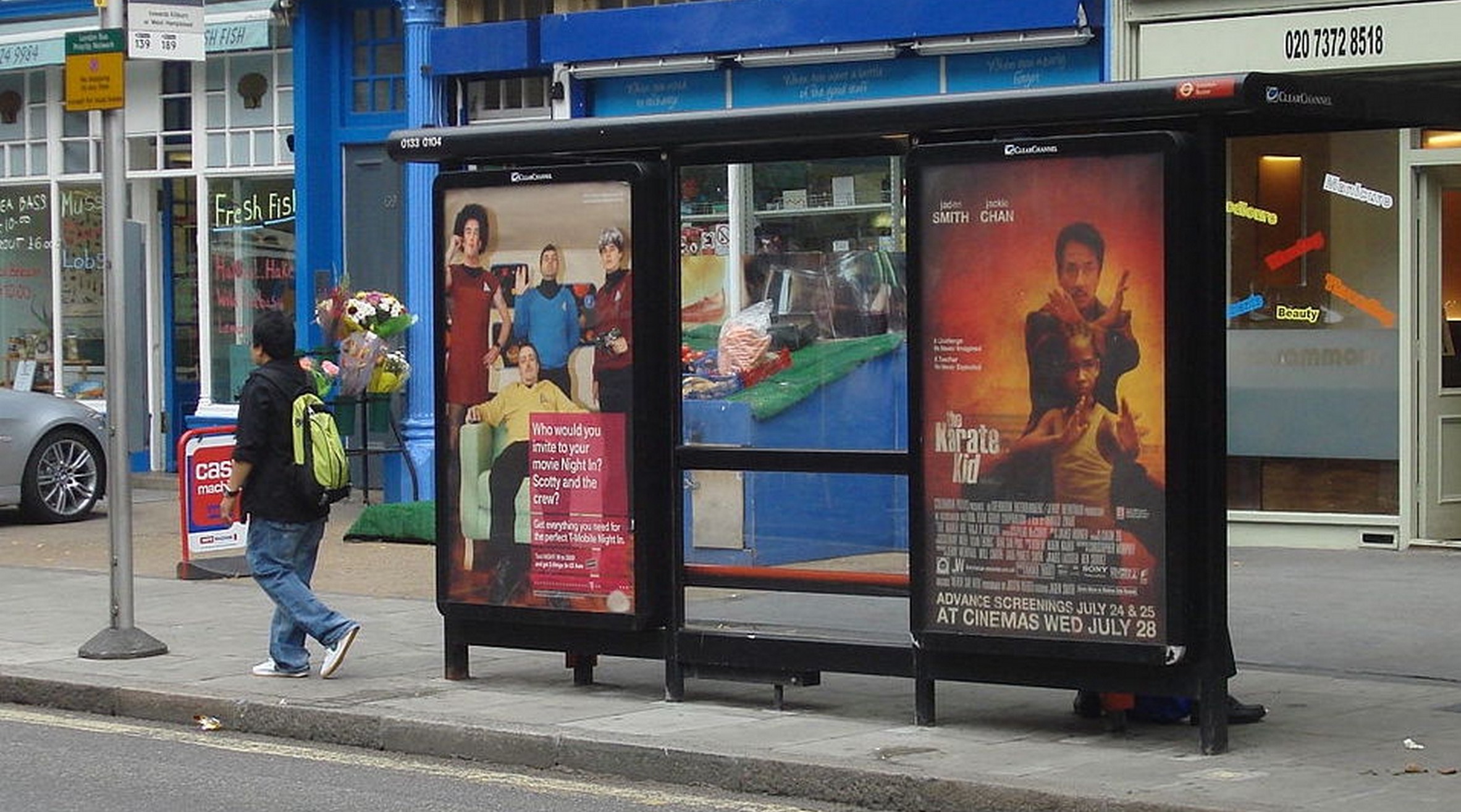
Bus stop advertising is a powerful form of Out-of-Home (OOH) marketing that can effectively connect with a wide audience. Positioned in high-traffic areas, bus stop ads can capture the attention of both commuters and pedestrians, making them a valuable tool for increasing brand visibility.
The audience reach for bus stop advertising campaigns is notably high. In fact, according to the UK Government’s Department for Transport, there were 3.4 billion local bus passenger journeys made in England in the year ending March 2023. This vast number of commuters highlights the significant potential for brands to engage with a large and diverse audience through bus stop advertising.
So, let’s go ahead with our insights and thoughts on how effective bus stop advertising is with audiences today.
The Origins of Bus Stop Advertising
Bus stop advertising is a fascinating concept that has become a staple in Out-of-Home (OOH) marketing, but it all started with the visionary Jean-Claude Decaux. As the founder of the renowned JCDecaux company and a pioneer in OOH advertising, Decaux identified an untapped opportunity in the market.
Before JCDecaux, France had no bus shelters. In 1964, Decaux offered to build and maintain bus stops and shelters in exchange for the right to use them for advertising. This innovative approach led to the creation of the first JCDecaux bus shelter in Lyon, marking the birth of bus stop advertising. This model not only provided a public service but also opened up new avenues for brands to engage with commuters.
The Digital Revolution, which began in the 1980s, has since transformed the advertising industry. Digital bus stop displays, however, didn’t emerge until the 2000s. These displays allow multiple high-resolution ads to rotate in a single location, providing dynamic and visually appealing content to passersby. Yet, unlike on-vehicle ads, which move with your audience, bus stop ads remain stationary.
Striving to make a genuine impact on OOH audiences?

Bus Stop Advertising
Costs:
So, how much does bus stop advertising cost? Well, that depends on several key factors:
1. Duration
The length of your campaign is a significant factor in the cost. A longer bus stop advertising campaign will naturally be more expensive due to the extended exposure time. The duration you choose should align with your marketing goals—shorter campaigns may be ideal for a quick promotional push, while longer campaigns can sustain brand visibility over time.
2. Location
Location plays a crucial role in pricing. Bus stops in high-traffic areas, especially in city centers like London, will command higher prices due to the increased footfall and potential for more impressions. For example, advertising at a bus stop in central London is likely to be far more expensive than in less populated areas.
The Pros of Bus Stop Advertising
1. Potential Positive Impact on Audiences
When done right, bus stop advertising can have a significant impact on your audience. Creative and engaging campaigns can make bus shelters stand out, capturing attention and leaving a lasting impression on consumers. The use of modern digital screens at bus stops only enhances this effect, making ads more compelling and visually appealing.
A notable example is Ikea’s 2018 bus stop campaign, where the brand transformed bus shelters into cozy living rooms. By replacing traditional benches with plush outdoor sofas, Ikea not only made commuters feel more comfortable but also increased brand awareness by creatively showcasing their products in a real-world setting. This campaign demonstrates the power of a well-executed bus stop ad in engaging audiences and elevating a brand’s presence.
In summary, while bus stop advertising costs vary based on duration and location, the potential impact on audiences can be substantial.
2. Run Multiple Ads Simultaneously
Digital bus stop screens can rotate between ads, allowing you to showcase several different ads at a single location, maximizing visibility.
3. Reach a Diverse Audience
Bus stop ads connect with a wide range of people—commuters, motorists, and pedestrians—making them ideal for raising brand awareness across diverse demographics.
4. Drawbacks of Bus Stop Advertising
A key drawback is that bus stop ads are stationary, limiting their reach compared to mobile ads that move with your audience.
5. Overly Generic Audience Targeting
One potential drawback of bus stop advertising is its limitations in reaching highly specific audiences. Because bus stop ads are often viewed by a broad and diverse audience, they may lack the focus needed for campaigns targeting a smaller, specific group in a particular location.
6. The Price of Bus Stop Advertising
Bus stop advertising can be expensive, especially for longer campaigns that run for several months. The cost-effectiveness of this method depends largely on your budget and campaign goals.
7. Measuring Bus Stop Advertising Campaigns
Assessing the performance of bus stop advertising campaigns can be challenging. While it’s crucial to measure the effectiveness and impact of your ads, accurately tracking their success can be difficult in Out-of-Home (OOH) advertising.
What Is Street Furniture Advertising?
Street furniture advertising involves using urban objects, such as bus stops, for ad campaigns. These ads blend into everyday surroundings, often positioned at eye level, making them hard to miss.
Examples of Street Furniture
Common examples of street furniture used in advertising include:
- Benches
- Telephone boxes
- Street bollards
- Information boards
- Shopfronts and shutters
- Public toilet advertisements
Now that you’ve reached the end of the blog, why not have a chat with us? We’re here to answer any questions you might have and help you take the next steps in your advertising journey.


